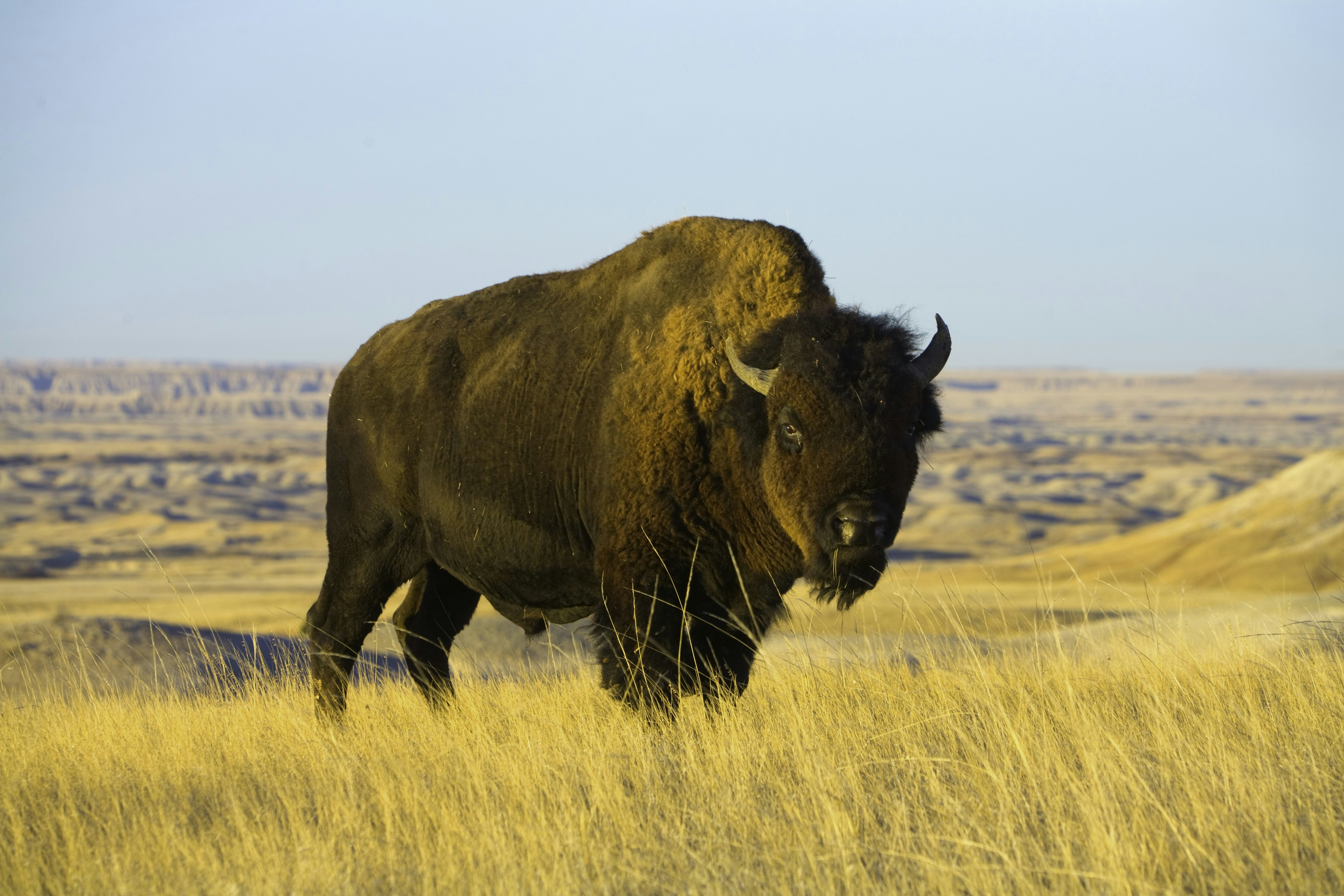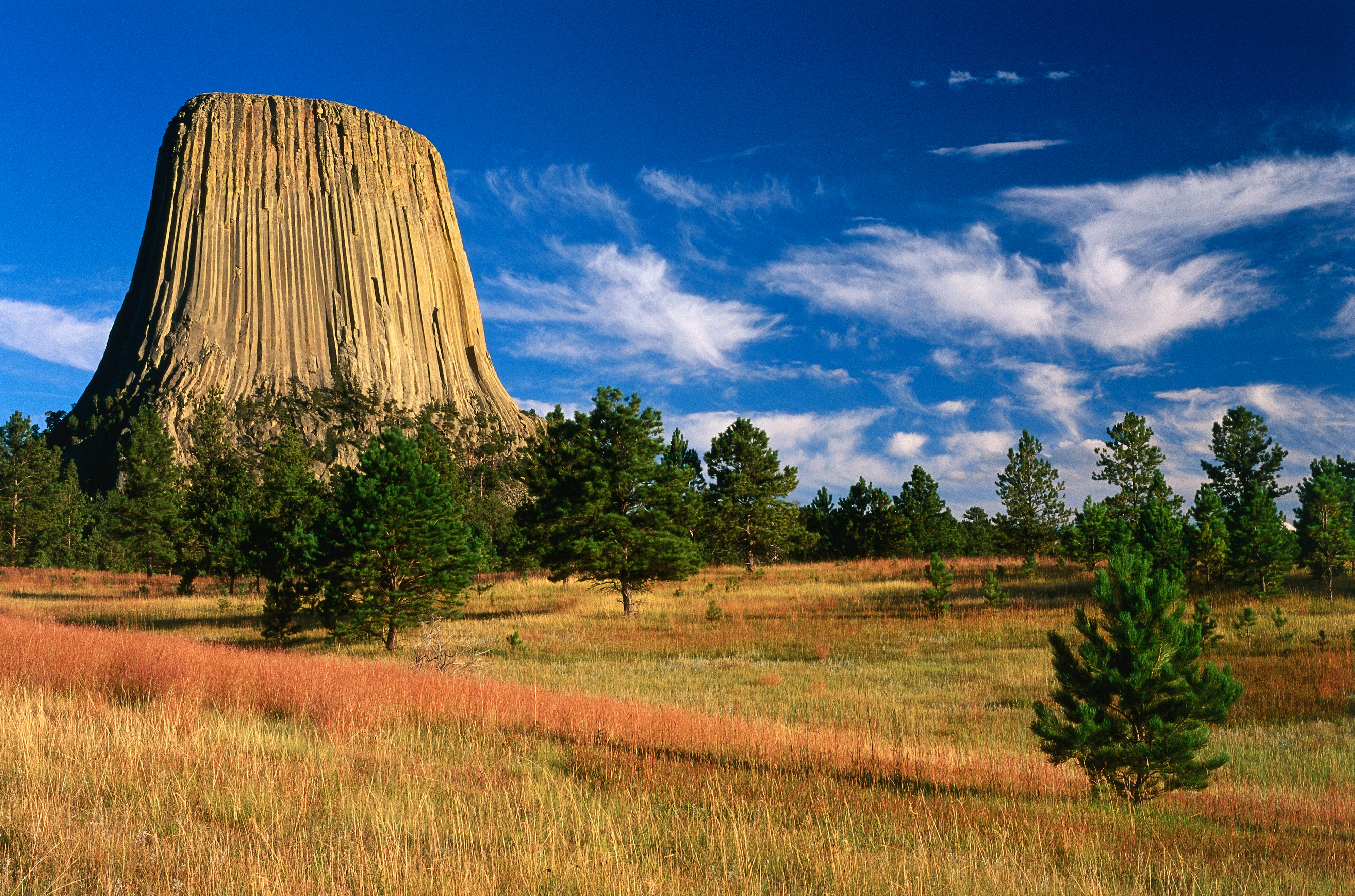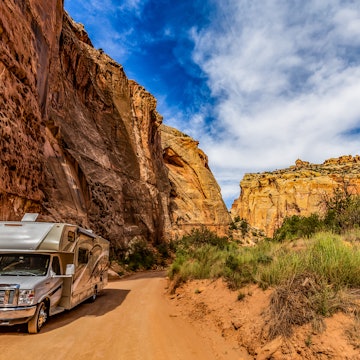
Finding Indigenous America in US national parks this summer 2022

Jun 14, 2022 • 8 min read

A young Navajo boy rides his horse in Monument Valley Tribal Park © grandriver / Getty Images
From the gnarled desert canyons of the Southwest to the windy sweep of the Great Plains, the United States' cinematic western landscapes are interwoven with Native American tribal lore and traditions.
Explore the past (and present) of Native American culture at these national parks, monuments and historic sites, which protect ancient cliff dwellings, ghost dance sites, Old West trading posts and much more.
Here are 8 national parks where you can learn more about the history of the Native American peoples first-hand.

Mesa Verde National Park, Colorado
Start in the Four Corners region, where the states of Colorado, Utah, New Mexico and Arizona meet. More Native Americans live here today than anywhere else in the USA. It's also the historical homeland of the Ancestral Puebloan people, who built elaborate cliff dwellings on the Colorado Plateau between 600 and 1300 CE. A Unesco World Heritage Site, Mesa Verde National Park preserves over 5000 archaeological sites and scores of Indigenous pueblos (villages) built into vertical cliff faces high atop the mesas, or "islands in the sky." Ranger-guided tours visit Cliff Palace, the park's largest and most impressively preserved cliff dwelling, and Balcony House, which you'll reach by climbing wooden ladders and twisting through narrow tunnels to glimpse 800-year-old kivas (underground ceremonial rooms).
Introducing Colorado's National Parks

Chaco Culture National Historic Park, New Mexico
Many Native American tribes were forced to relocate to the Four Corners region during the USA's 19th-century western expansion, but Indigenous people had already been living here for almost a thousand years prior to the arrival of the US military and pioneer homesteaders. Across the Southwest, a vast network of roads built by Ancestral Puebloans all led to Chaco, the prehistoric city at the center of the complex Chaco Culture, which flourished between 800 and 1100 CE.
You can drive the park's loop road in a day, stopping to walk through eerily deserted adobe houses and plazas and past ancient petroglyphs etched into rocky cliffs. Located in a remote area of New Mexico, Chaco Culture National Historic Park is one of the Southwest's most isolated parks, its dark skies so far from any city lights that it's perfect for star-gazing, either from the park's astronomical observatory or your own campsite.
How this Minneapolis chef is reintroducing Native American cuisine to the world

Canyon de Chelly National Monument, Arizona
Generations of Native Americans have sought out hidden life-giving pockets of the Four Corners region. Canyon de Chelly is one such place, with natural springs that sustained ancient pueblos, fruit orchards and fields of corn, beans and squash. Later Hopi people settled the canyon, followed by the Navajo, who still reside here. Jointly managed by the National Park Service and the Navajo Nation, Canyon de Chelly National Monument is the place to slow down and dig deep into Native American culture and history. Take a back country 4WD tour with a Navajo guide, or drive yourself to lookout points along the canyon's rim, then hike down into the secretive canyon on the White House Trail. Elsewhere in the Navajo Nation, don't miss the exquisitely preserved Hubbell Trading Post National Historic Site, with its prized Navajo rug room and daily demonstrations of traditional weaving techniques.
Introducing Arizona’s national parks and monuments

Effigy Mounds National Historic Site, Iowa
The American west doesn't have a monopoly on Native American history – there's plenty in the northeast and midwest, too, including the ancient Effigy Mounds Historic Site in Iowa. They were built by the Mississippian cultures, a broad group of regional tribes who lived here before the arrival of European colonizers, including the ancestors of the Sac and Fox and even tribes often associated with other areas of the country, like the Standing Rock Sioux and Winnebago Tribe of Nebraska. There are over 200 mounds, many in the shape of birds, bears and other animals, which continue to be revered as sacred sites to this day.
Indigenous cuisine revitalization: best places to sample traditional foods

Badlands National Park, South Dakota
If you want to see how the American West looked to Native Americans for centuries before US military forces and settlers arrived, head for the Black Hills of South Dakota. Countless Hollywood Westerns, including Dancing With Wolves, have been filmed here, but for the most cinematic scenery seek out the mesmerizing eroded pinnacles and buttes of Badlands National Park. Spy on bison, which once covered the plains in herds millions of animals strong, hunted by Native Americans as a source of food and raw materials for clothing, shelter and weapons.
The park's southern section is on the Pine Ridge Reservation of the Oglala Sioux. Here the last ghost dances – in which Native Americans ritually danced and prayed for peace against the onslaught of the US government – took place in the late 19th century. It's also the site of the infamous Wounded Knee massacre, the final armed confrontation between US Cavalry troops and Native Americans, which closed the frontier forever in 1890. Stop by the park's White River Visitor Center and the Red Cloud Indian School's Heritage Center to learn more about the heartbreaking history of this land, recently proposed to become the USA's first tribal national park.
11 Indigenous-owned hotels in the US and Canada

Alcatraz Island National Recreational Area, California
Although most people think of huge swaths of impressive backcountry landscapes when they picture national parks, you can find some close to big cities too – or right in the middle of their harbors. That's the case with Alcatraz, the former prison island in San Francisco Bay, which also has a role in Native American history.
All of the Bay Area was once home to the Ohlone tribe, and they may have used Alcatraz island as a place to gather food, or as a spiritual site. The real significance of Alcatraz, however, comes thousands of years later in November 1969, when an activist organization called American Indians of All Tribes occupied the former prison.
The group cited a loophole in the Treaty of Fort Laramie that was originally signed by the US government and the Lakota tribe a hundred years earlier, which stated that and federal land that was abandoned or not in active use was automatically returned to the Native Americans who had once lived there. The occupation lasted until June of 1971, and the following year the formerly abandoned federal land was added to the National Park Service, ending the claim laid by American Indians of All Tribes.
Top 5 day trips from San Francisco

Devil's Tower National Monument, Wyoming
Though it's technically a national monument, not a national park, it's well worth including this sacred site that operates under the auspices of the National Parks Service and continues to be of huge religious significance to the Northern Plains Indians. It's awe-inspiring to hike the easy trail that circumnavigates the base of the tower – known to the Lakota as Matȟó Thípila and to the Crow as Daxpitcheeaasáao, both meaning "Bear's Lodge." As you approach, you may notice small ribbons and pieces of fabric hanging from the tree branches. Don't disturb these or photograph them – they are sacred offerings and should be left well alone by non-Native visitors.
Devil's Tower is also a popular spot for rock climbers, though the practice is as controversial here as it was at Uluru in Australia before climbing was banned there out of respect for Aboriginal peoples. Though no such ban has been enacted here, the parks service does request climbers comply with a voluntary closure in June, when many Native American ceremonies take place and refrain from attempting their routes during that month.
Experience Yellowstone National Park sustainably: your guide to going green

Hawai‘i Volcanoes National Park
Native Hawaiians are descended from Polynesian sailors who landed between 1000 to 1200 CE. They developed their own culture and religion and had sovereignty over the islands until Queen Liliʻuokalani was deposed in 1893. According to their beliefs, the land encompassed by Hawai'i Volcanoes National Park is 'Aina a ke akua e noho ai, or "The land where the divine dwells" – specifically the Goddess Pelehonuamea, who lives in the crater Halema‘uma‘u at the summit of Mount Kilauea.
If you want to learn more about the Native history of Hawai‘i Volcanoes National Park, visit the Pu‘uloa Petroglyph Field, where thousands-of-years-old rock drawings have been preserved, as well as the Footprints Area, where you can see actual fossilized impressions from an ancient Hawaiian's walk through soft ground. You can also follow in the (less literal) footsteps of the Hawaiian people up the The Ainopio Trail, which leads up the slopes of Mauna Loa, and was originally worn by those bringing offerings to Pele, the volcano goddess.
In Hawaiʻi Volcanoes National Park, witness the Earth's power
Traveler etiquette tips
Ask first before taking photos of any people on tribal reservations or Native Americans working at national parks and historical sites.
At archaeological sites and in the wilderness, practice "leave no trace" principles. Do not touch, move or otherwise disturb any artifacts or existing structures. Report any new discoveries to park or tribal rangers.
Always stay on paved walkways and signposted hiking trails unless accompanied by a park or tribal ranger or an officially licensed tour guide.
Buying, selling, possessing, consuming or transporting alcohol is illegal on some Native American reservations, including the Navajo Nation.















